Tawny Scrawny Lion is a Little Golden Book first published in 1952, written by Kathryn Jackson and illustrated by Gustaf Tenggren. The same team worked on The Saggy Baggy Elephant (1947).
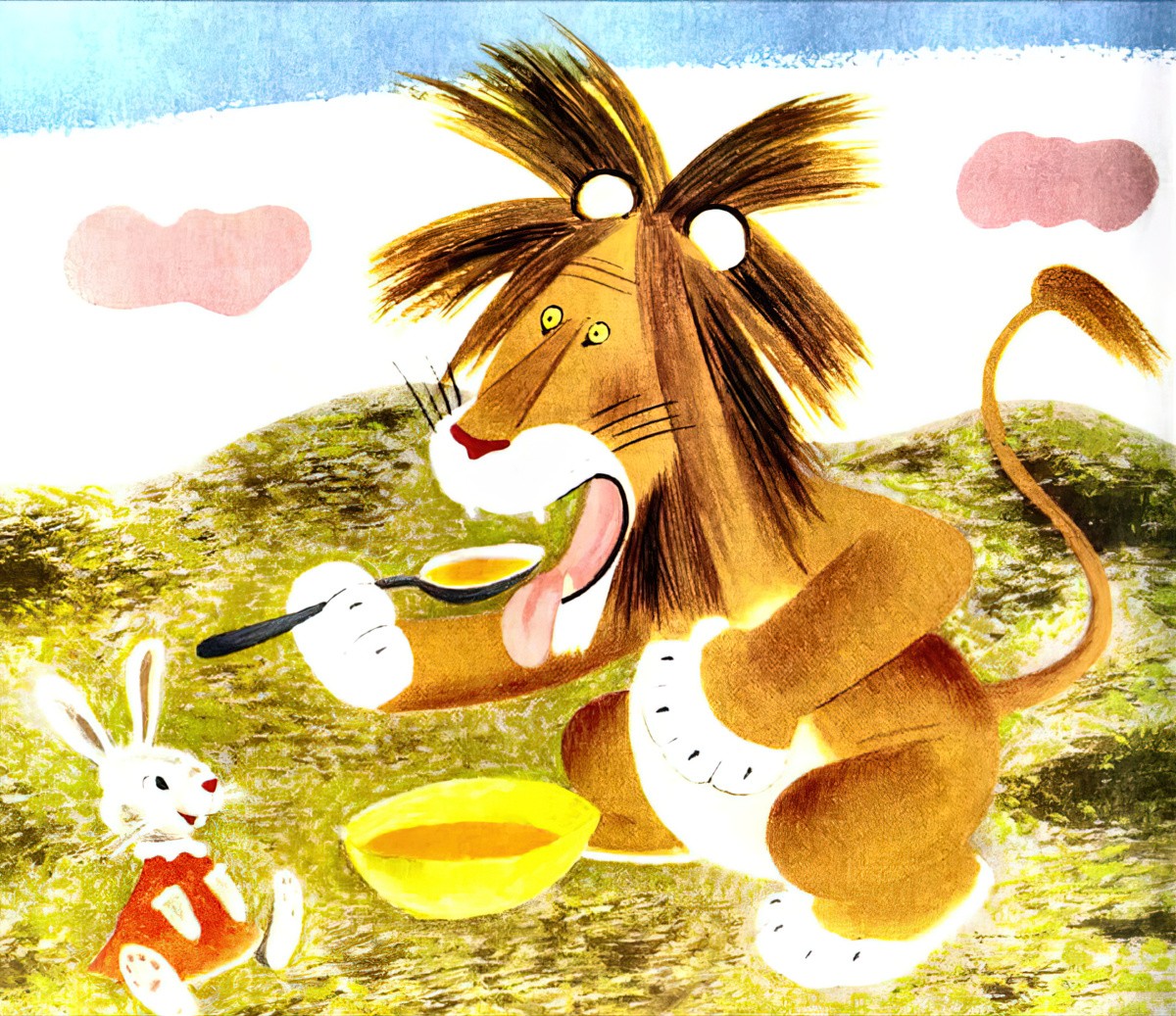
This picture book is an interesting example — indeed, the peak example — of how storytellers for children must cast aside certain unpleasant food chain facts when anthropomorphising animals.
Specifically: lions cannot live on carrots. Carrot soup does not provide nearly enough calories required to live as a lion. Even when made with fish, a lion would need a hell of a lot of it.
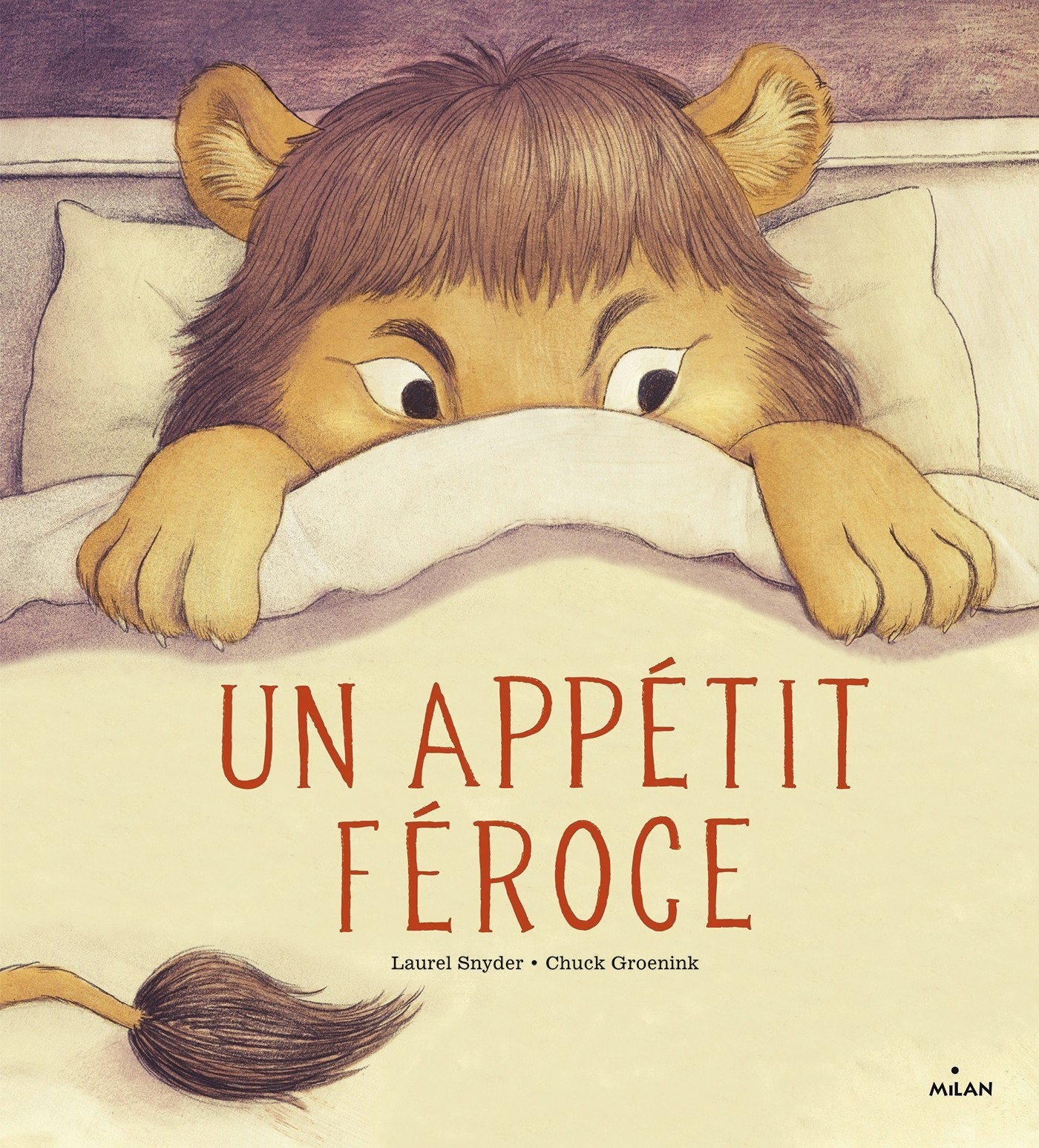
Nor do rabbits eat fish. The fish in this story are not considered live, empathetic creatures. Unlike the land animals, their eyes are dots. (The lions and rabbits have human-like eyes, with ‘whites’ (yellows) indicating where they are looking.
Why is the tawny lion so scrawny even though he catches everything he chases? There is no realworld biochemical reason. This is classic fairytale physics, in line with the nonscientific cooling rates of the three differently sized bowls of porridge in Goldilocks And The Three Bears.
SETTING OF TAWNY SCRAWNY LION
At first I assumed Tawny Scrawny Lion is set in a utopian, picture book jungle, looked harder at the pictures and realised it was probably a savannah, then saw a Golden Book Video Classic called ‘Tawny Scrawny Lion’s Jungle Tales’ and realised the setting is meant to be a coded as a jungle. Compared to other picture book jungles, there is comparatively little typical jungle imagery. (Compare to The Saggy, Baggy Elephant, full of classic jungle imagery.)
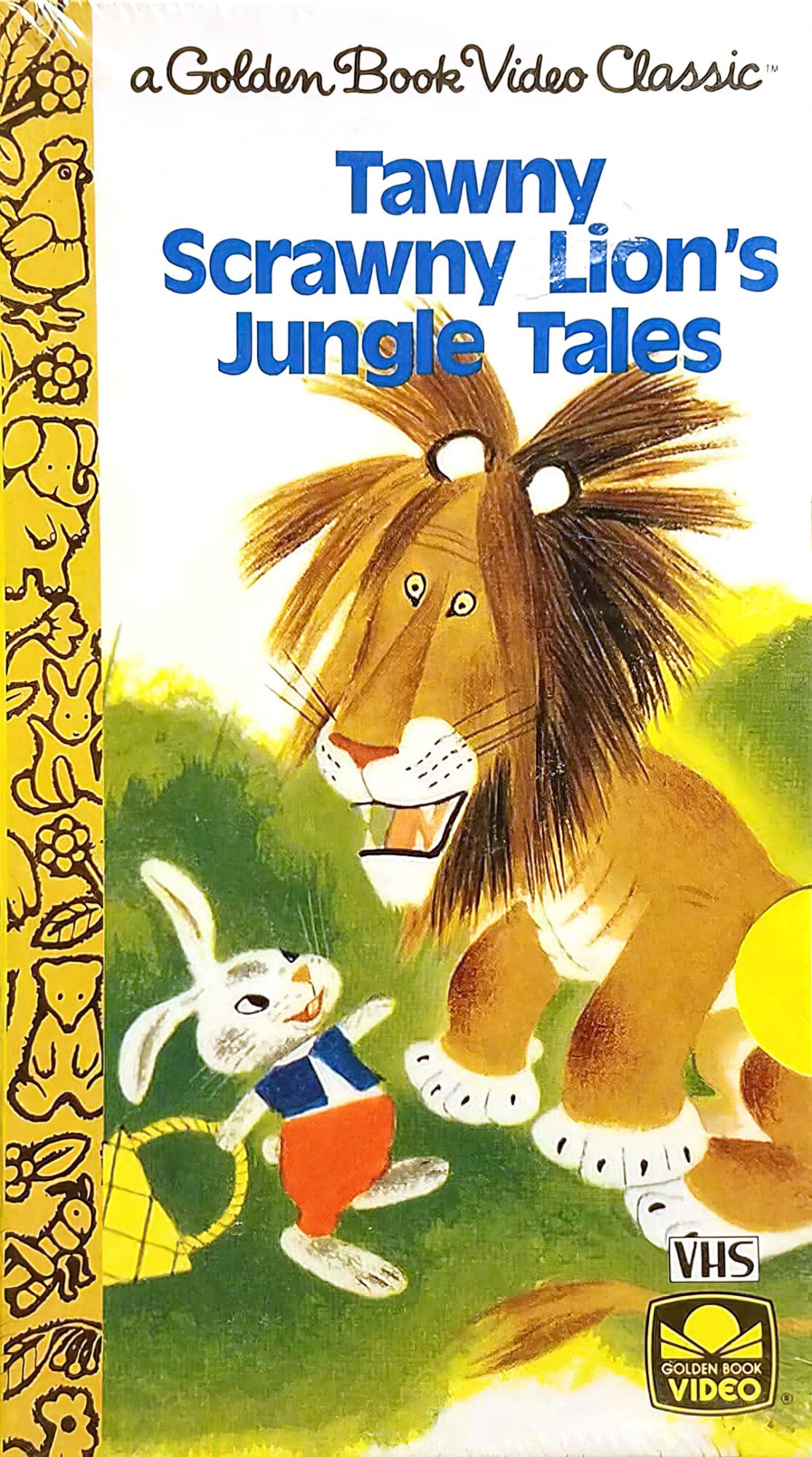
The social world of Tawny Scrawny Lion starts out more like a real savannah/jungle (where larger carnivores eat smaller ones) and ends in a place completely divorced from a real world place. In any picture book starring animals, those animals will be anthropomorphised to some degree. Normally the storytellers pick a spot on that continuum and stay there, though animals in the same story are frequently positioned at different points on the anthropomorphising continuum.
The rabbits in this particular story are more civilised than the lion, who must become equally anthropomorphised before any of them can live in harmony. (The rabbits have access to bowls, spoons and a cauldron for cooking their carrot soup. They also have access to fishing lines and, most importantly, wear clothes, which are gendered.) Becoming more civilised (more like a human) is the lion’s main character arc. Tawny Scrawny Lion moves from wild animal to gentrified patriarch.
The poor old fish remain as foodstuffs. It’s clearly more difficult for humans to empathise with fish than with land mammals.
Tenggren’s illustrations are appropriately folk arty for this fantasy picture book world, with just the suggestion of savannah, and shapes placed on the page without an attempt at real world perspective.
The implicit ideology is clear; if animals could live more like (vegetarian) humans, the savannah would be a kinder, less brutal place.
This is what dates the book. Mindfully leaving vegetarian ideology aside, we now know how vital large animals are to an ecosystem. Taking wolves as an example, the reestablishment of just one pack of previously eradicatedwolves to an ecosystem can do an amazing amount of good… precisely because they hunt and kill. Lions are equally important.
STORY STRUCTURE OF TAWNY SCRAWNY LION
PARATEXT
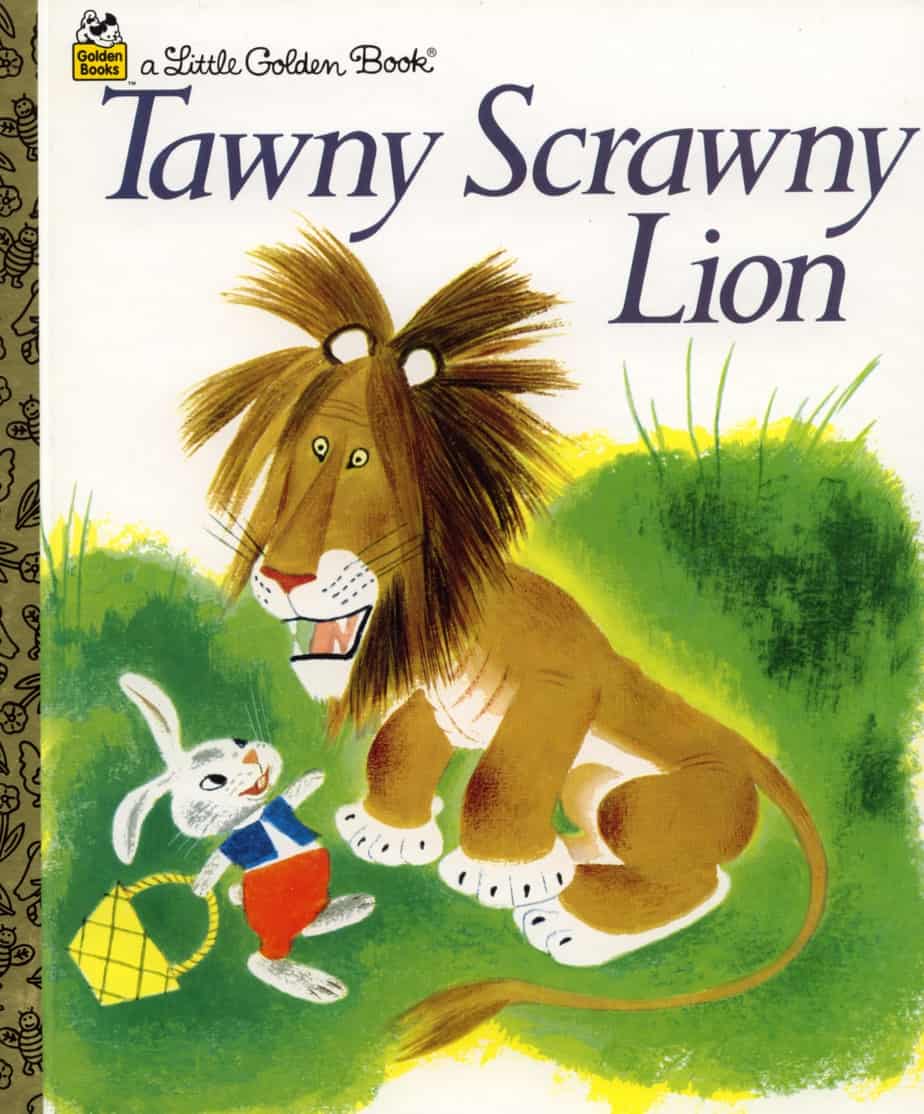
Once there was a tawny scrawny lion who chased monkeys on Monday—kangaroos on Tuesday—zebras on Wednesday—bears on Thursday—camels on Friday—and on Saturday, elephants!
So begins the funny, classic Golden story of a family of ten fat rabbits that teaches the hungry lion to eat carrot stew—so that he doesn’t eat them!
marketing copy
SHORTCOMING
The Tawny Scrawny Lion has a fantasy medical condition where the more animals he catches the scrawnier he becomes.
DESIRE
The lion seems content enough continuing to chase animals, probably never understanding what satiety feels like. The rabbits seem to understand that if they can persuade the lion to eat carrot soup, the benefits will be two-fold: The lion will feel more vigour and the rabbits will have saved all the animals further down the food chain (including themselves) from getting eaten.
OPPONENT
Since lions eat rabbits, they are natural opponents.
PLAN
Though this is left off the page, I imagine a belling the cat scenario in which the rabbits have a meeting, make a plan to invite the lion to change his diet, then invite him around to eat carrot soup.
But we only see the plan being carried out.
THE BIG STRUGGLE
Anyone who knows anything about lions will be expecting disaster, but anyone who knows anything about Little Golden Books from the mid 20th century will know that this is a cosy story and the animal characters will be friends by the end.
The prose contains plenty of suspense. When the little rabbit stops to catch some fish ‘this is almost too much for the hungry lion’. The illustrations support the reader’s fear that the lion will lose control and gobble the little rabbits up.
Peak danger: four little rabbits ‘plumped themselves down in the lion’s lap’. Don’t you love the author’s use of ‘plump’? And the illustrator’s depiction of a wide open lion mouth, with those tiny, crazed pupils…
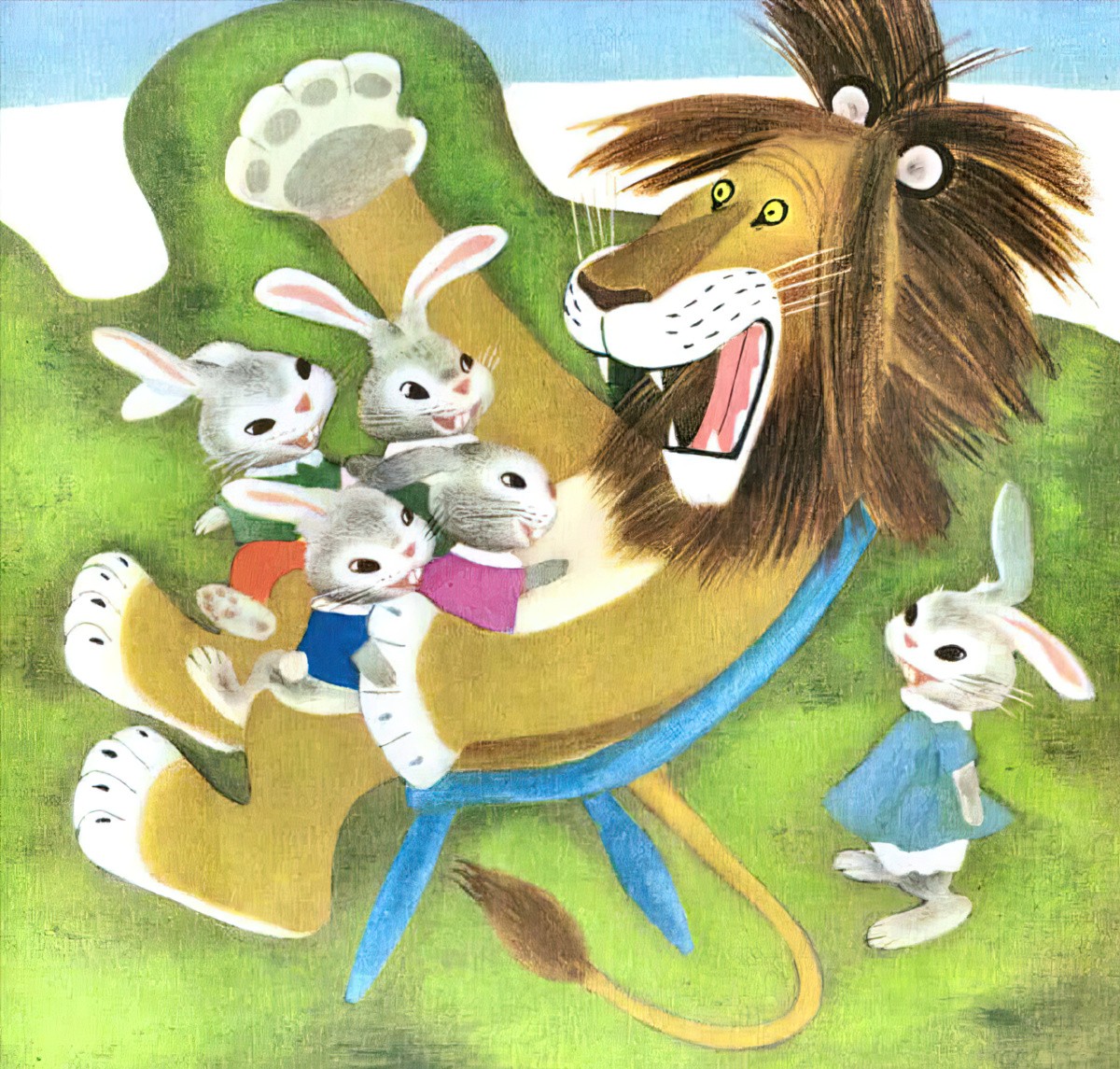
Turn the page and we learn that the carrot soup has worked as a magic potion to quell the lion of hunger. ‘And somehow, even when it was time to say goodnight, that lion wasn’t one bit hungry!’
ANAGNORISIS
The lion realises he feels much better eating carrot stew, albeit made with fish stock. He will give up hunting and from now on live the more civilised life of a stew eater…
NEW SITUATION
… so long as the rabbits keep making it for him.
EXTRAPOLATED ENDING
It’s true that large cats (or any wild animal) won’t hunt unless they are hungry. Humans are the only species who kill more than we need for our own sustenance.
So long as the rabbits keep feeding the lion that soup, and so long as it contains plenty of fish, maybe I can believe this happy scenario will continue forever.
RESONANCE
It could be argued that this storybook world is so far removed from reality that young readers wouldn’t draw any connection between morality and diet. But that’s not how children’s stories work at all. The surface interpretation is clearly fantasy. Covert ideology carries a story’s resonance; in this case, that animals who eat animals further down the food chain are morally wrong, and until they mend their ways, they will lead an unhappy life.
Adults love a story for children in which enemies become friends. Over the second half of the 20th century The Tawny Scrawny Lion stood the test of time a popular picture book character and sequels followed. ‘Tawny Scrawny Lion’ was now ‘THE Tawny Scrawny Lion’.
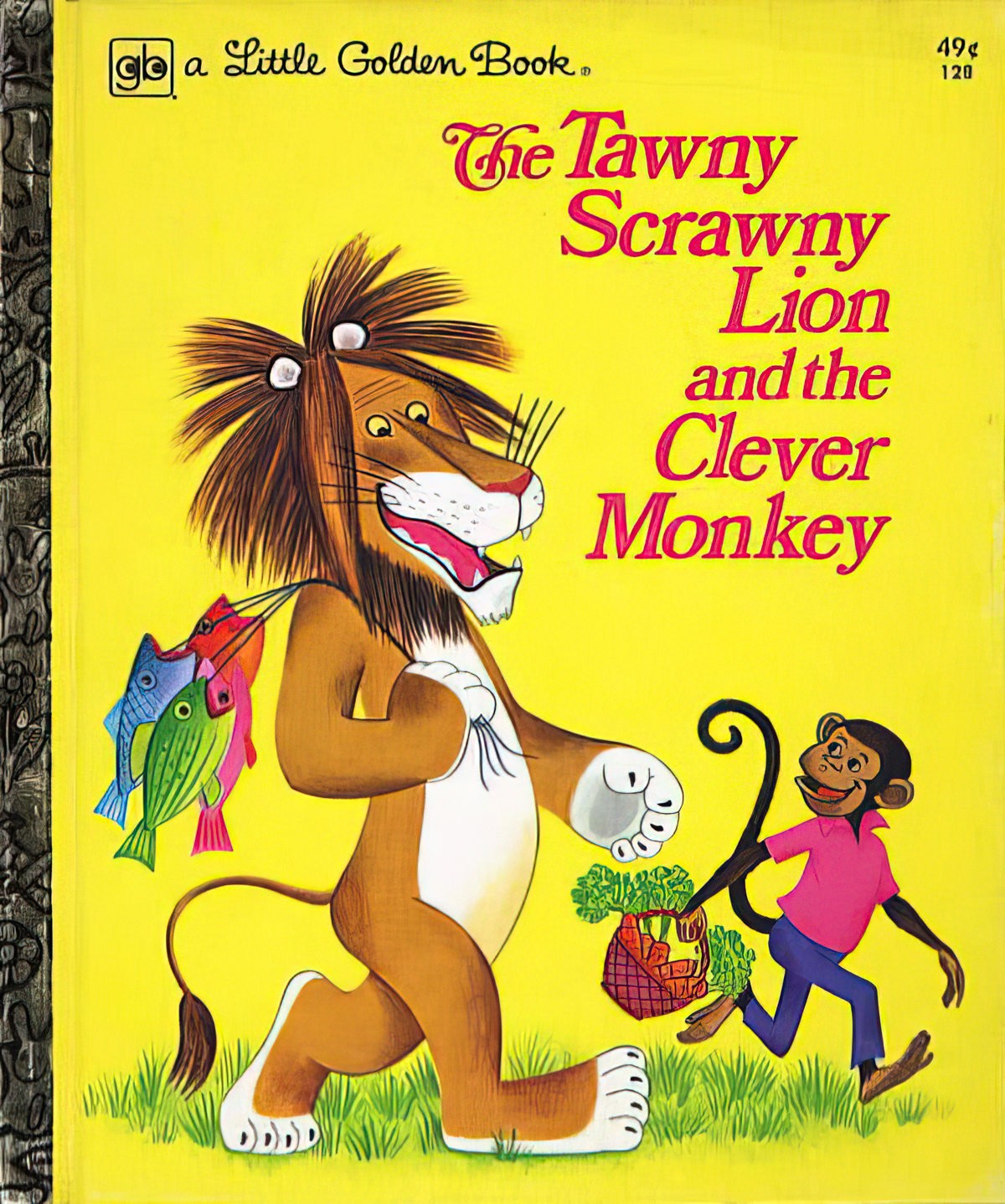
FOR FURTHER INVESTIGATION
There’s a subcategory of children’s stories in which a wild creature mends its wicked ways by defying instinct (and biology) to develop empathy for its food.
There Once Was A Cat by Cheryl Pelavin was published in 1969.
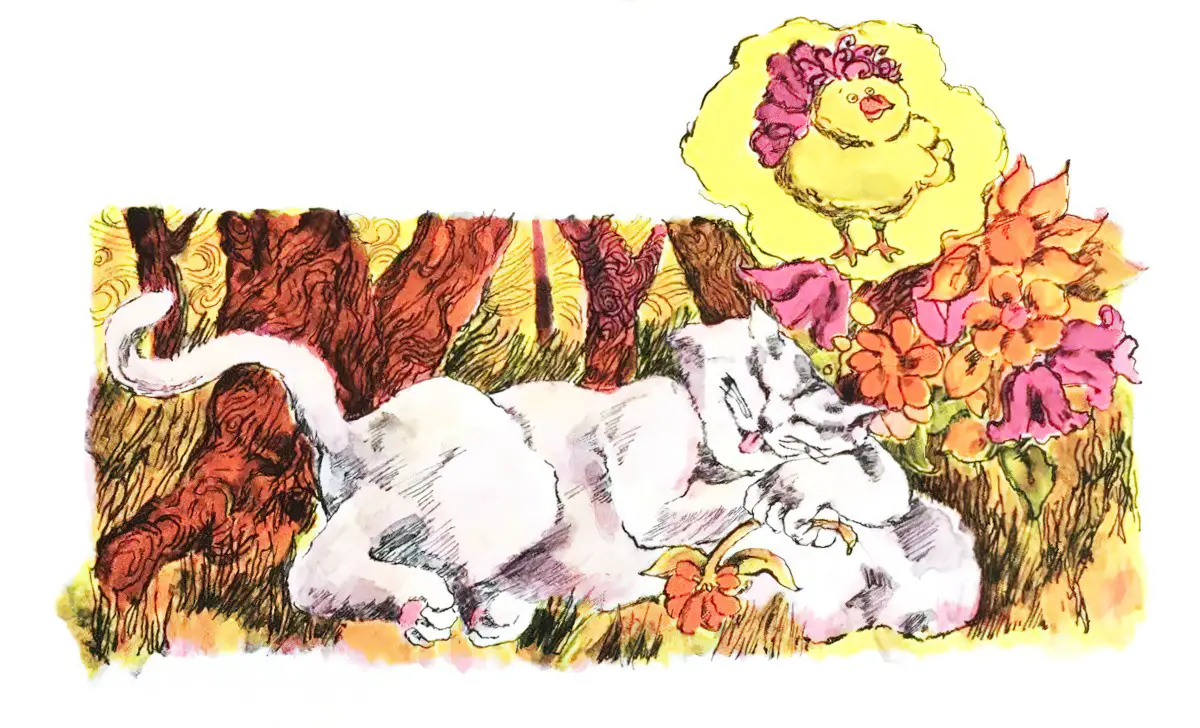
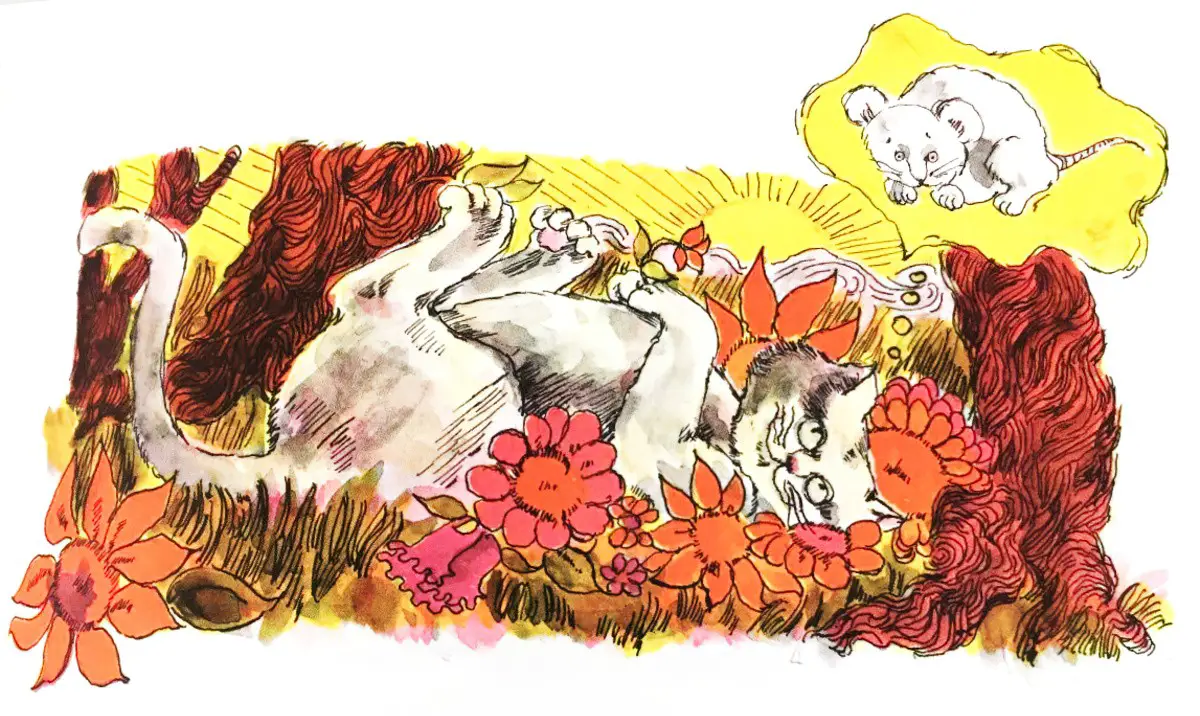
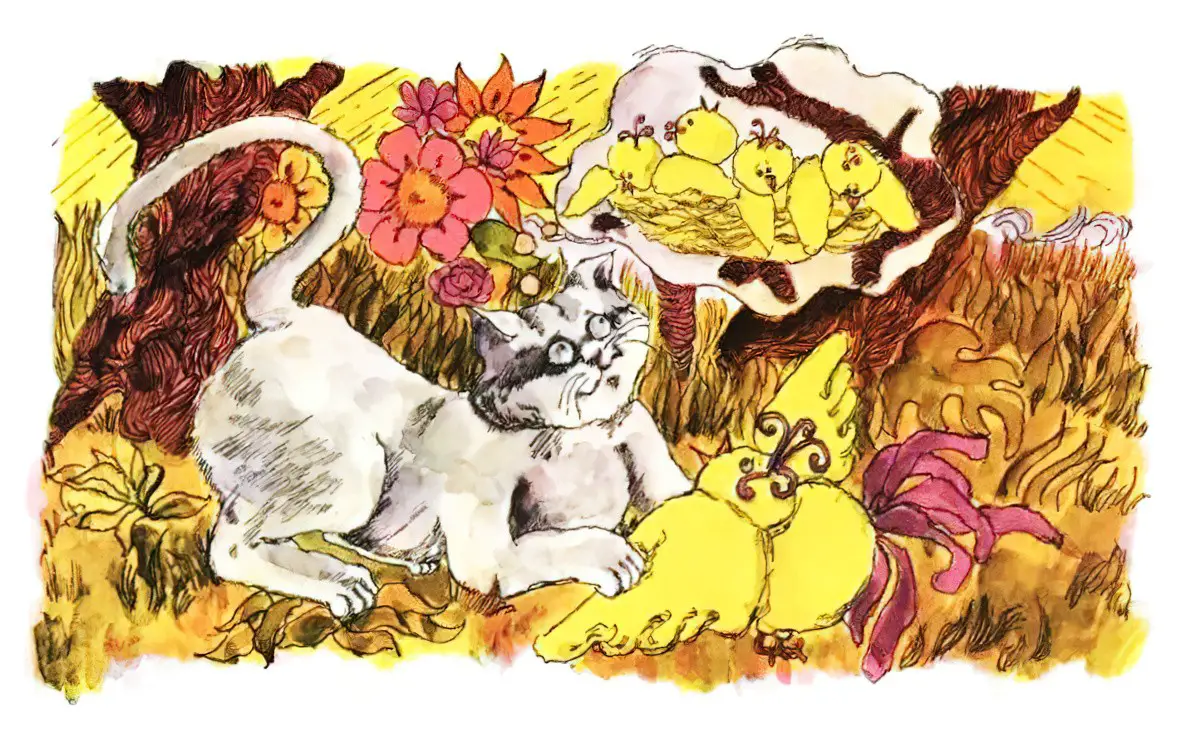
For more on Gustaf Tenngren, see the article on him at Animation Resources.

